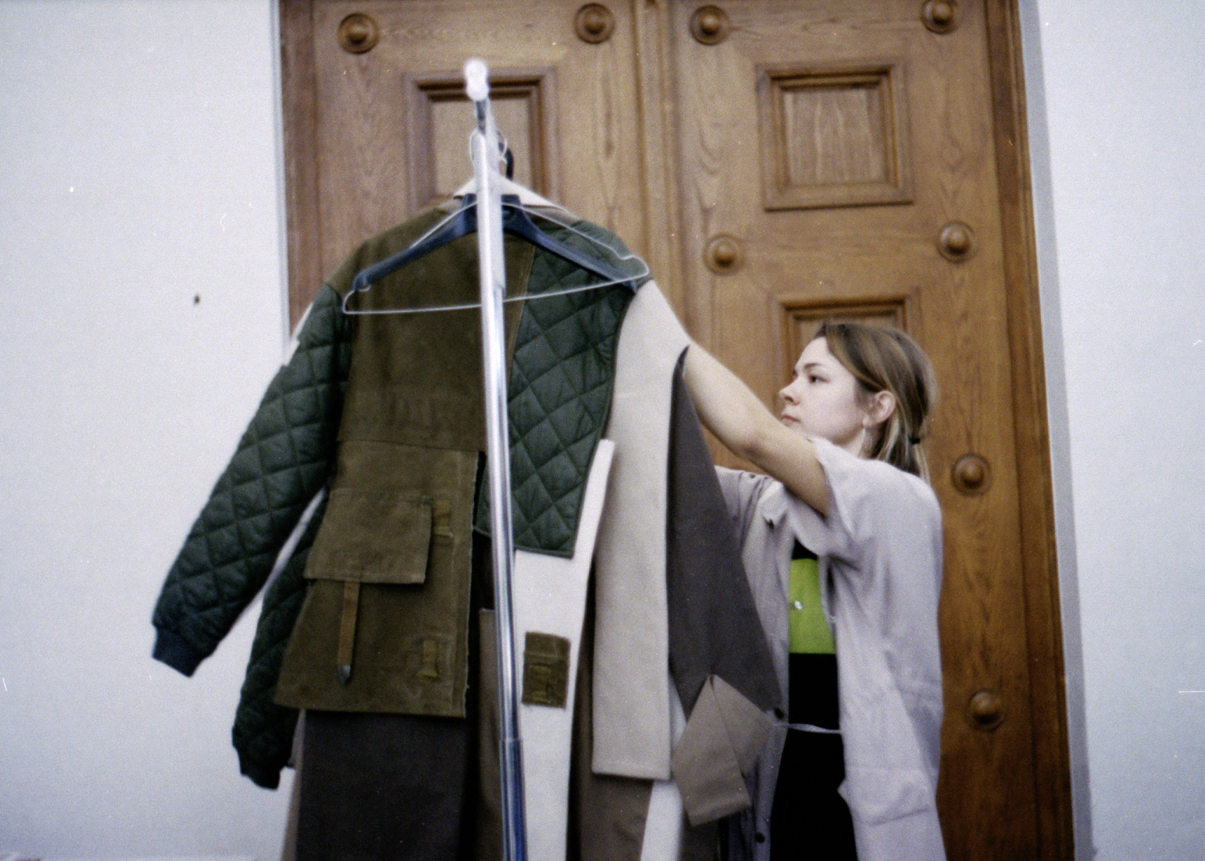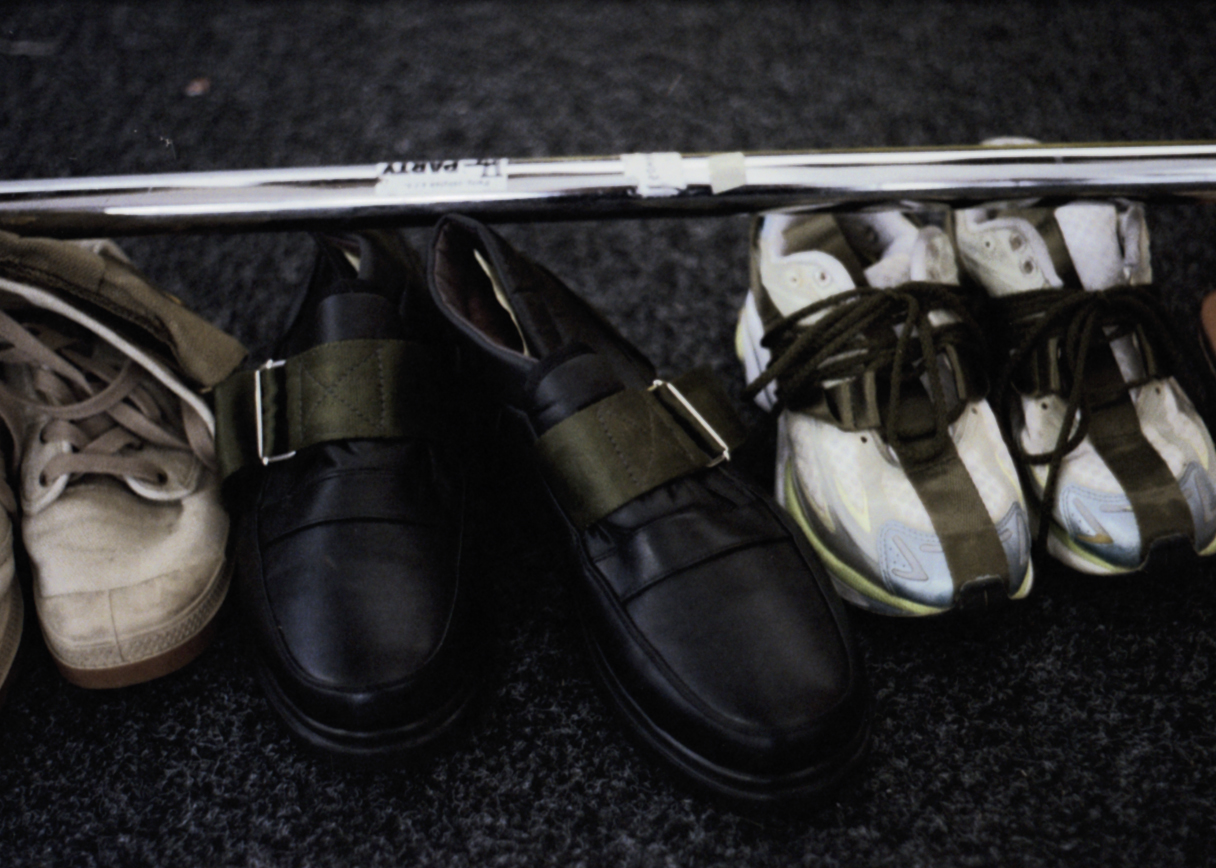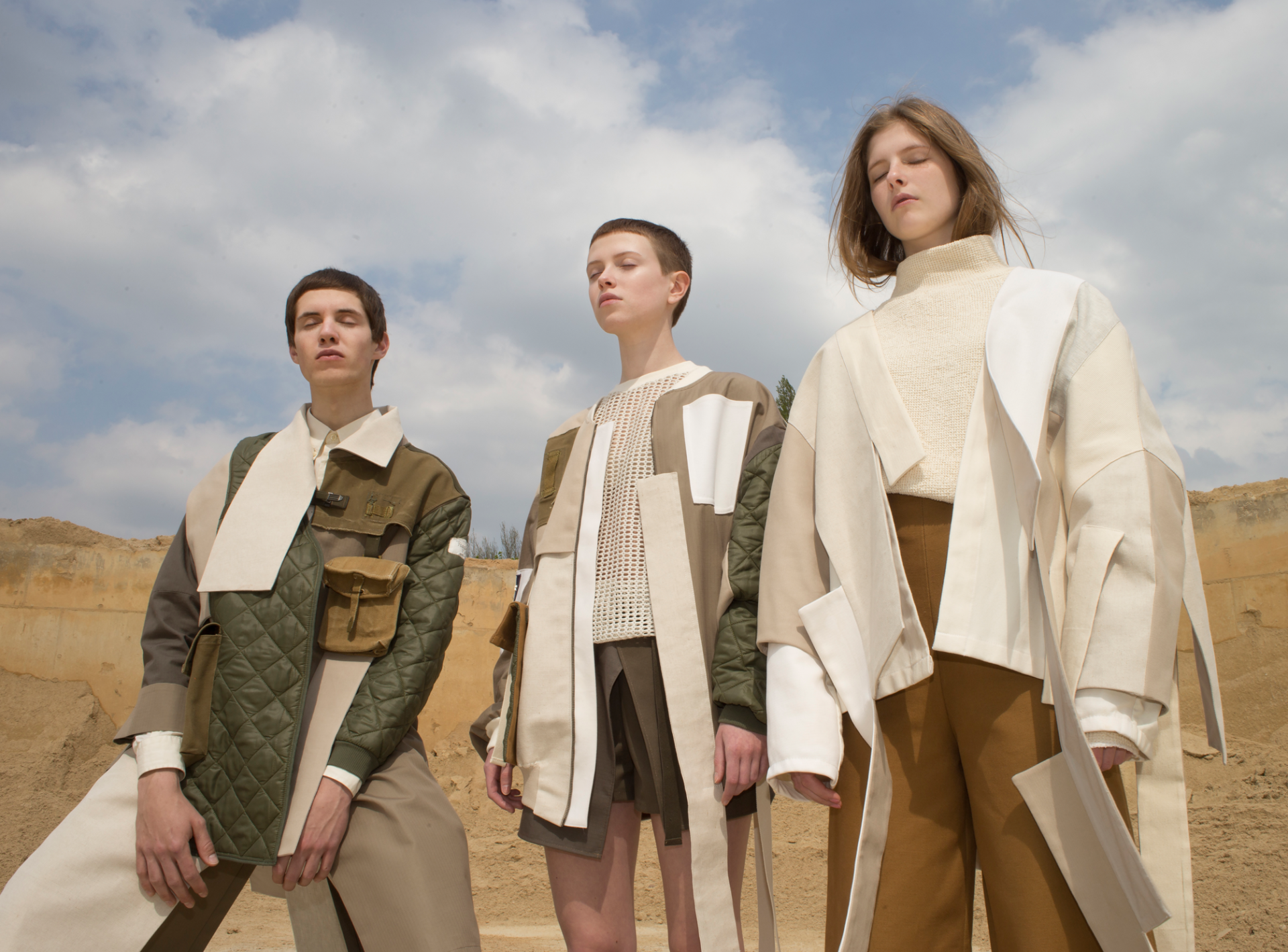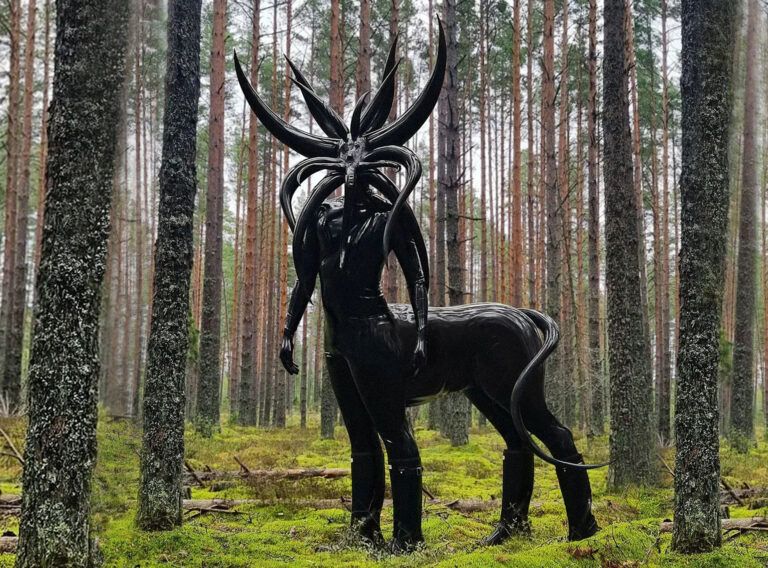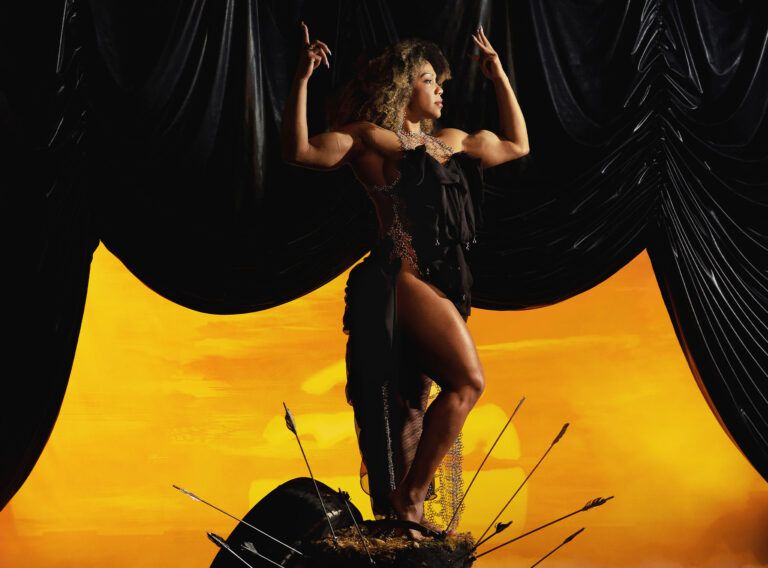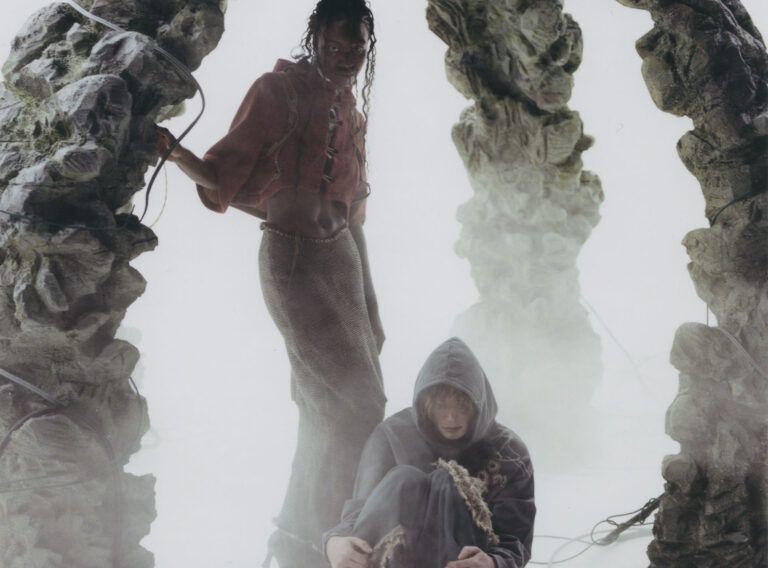WORDS BY THE AUTHOR / FRAGMENTS COLLECTION
The collection explores the aesthetics of workwear. The aim was to look at the aesthetics from a different perspective. The marks of time like ageing, abrasion and decay fascinate me.

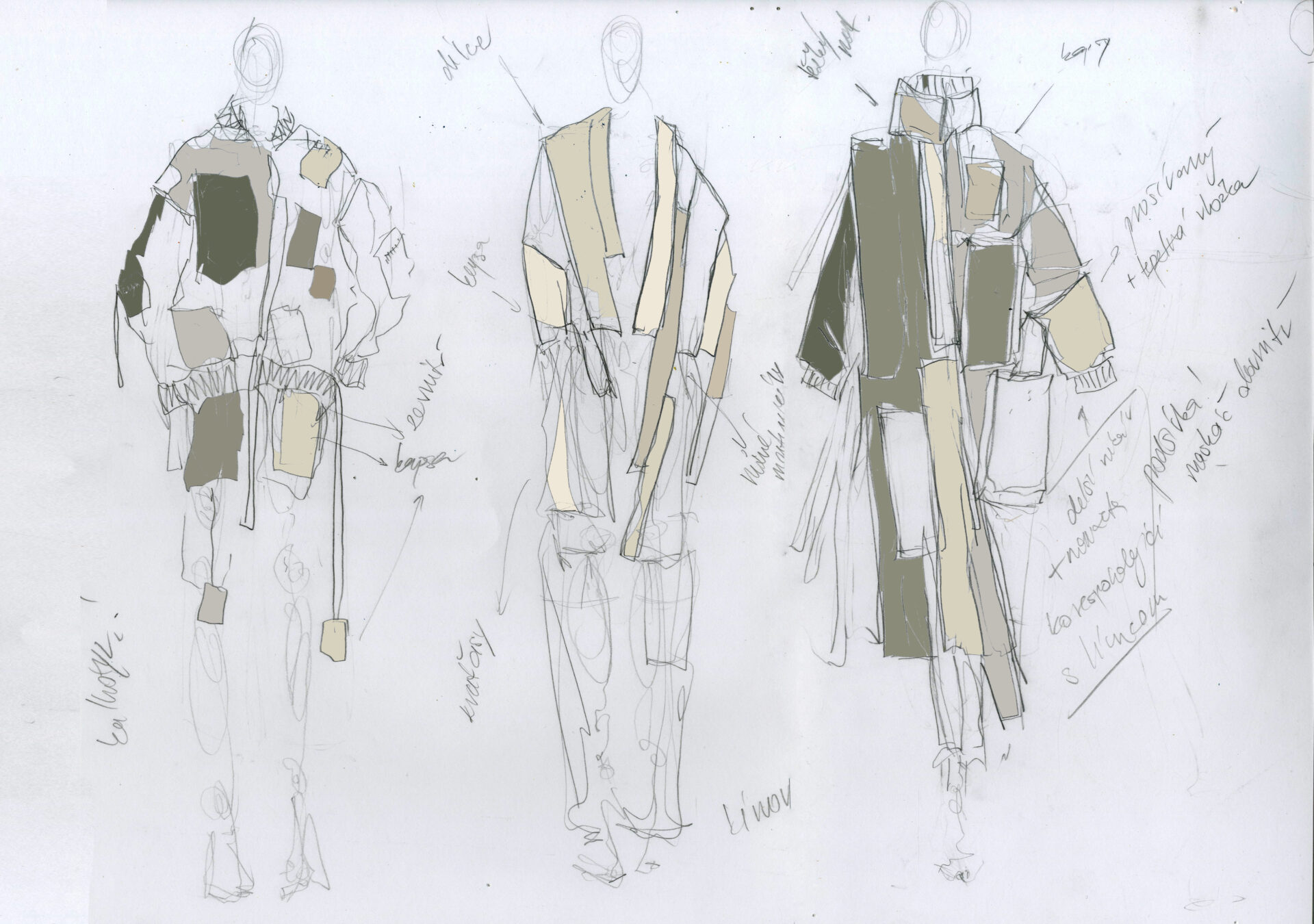
Authentic garments and components deconstructed into contemporary silhouettes accentuates their origin and individual characteristics. Japanese culture and the way how zen buddhist monks perceive clothing or use throwaway fabrics and leftovers intertwines the whole collection and refers to the wabi sabi philosophy and its acceptance of transience and imperfection.




Asymmetry, roughness, simplicity, austerity or modesty are characteristics of wabi sabi. I use the segments of fabrics that are positioned mostly vertically or into orderless compositions to connect different parts of garment. The individual patches also have functional elements such as pockets. This effect refers to patching technique used in fixing kimonos.



BIO / Karolína Čechová is a Czech fashion designer living and studying in Prague, at the Academy of Arts Architecture and Design. The Fragments collection came to life as a final bachelor’s work at the L. Sutnar faculty in Pilsen, the Czech Republic. She specializes in sustainable fashion, upcycled textiles and knit.
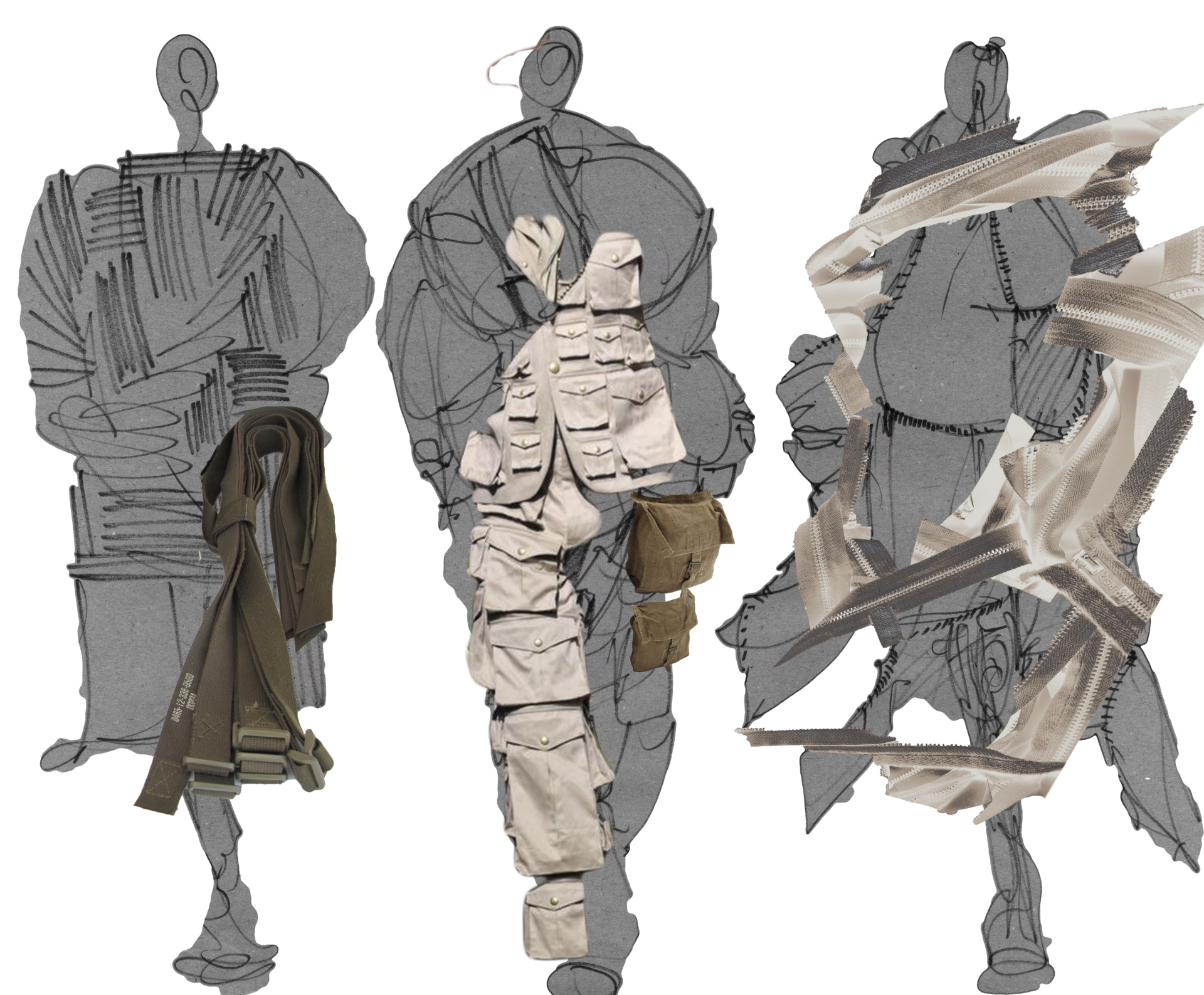






CREDITS
Portfolio photographs / Lena Gallovičová https://www.instagram.com/lenaluga/
The author of the shoes is Adam Frk / graduating at the University of West Bohemia, Ladislav Sutnar Faculty of Design and Art @adamfrk
Models / Pure Model Management, New Aliens Agency
